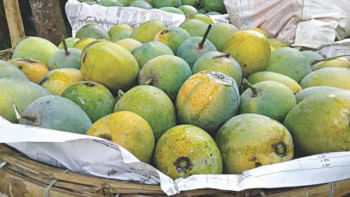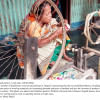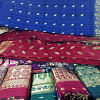Whose is it?

Recently, a debate has emerged on social media regarding whether or not the Tangail saree can be protected by a geographical indication (GI) and can belong to India.
The 1994 WTO TRIPS Agreement defines a GI as an indication that ascribes to a specific quality, reputation, or other feature of a product that is fundamentally attributable to its geographical origin within the territory of a WTO member or a regional locality within that territory.
A GI is customarily applied to industrial products, handicrafts, agricultural products, consumables, and wine and spirit beverages. Here, the question is raised as to whether the Tangail saree falls under the definition described above. The answer is: yes. As a handicraft, it does.
Additionally, the product eligible for a GI must have its place of origin within the territory or a designated region of a WTO member state. The question arises as to whether the Tangail saree originates in a member state's territory or a specific region within that state. The etymology of the Tangail saree, indeed, indicates that it originated from an area named Tangail in West Bengal, India.
Furthermore, in order for an item to qualify as a product bearing a GI, it must possess a specific quality, reputation, or other feature that can be attributed to its native land. The enquiry arises as to whether the Tangail saree's quality, reputation, or any other attribute can be primarily ascribed to Tangail in West Bengal, India.
In light of the enquiry posed on social media regarding the provenance of the Tangail saree, the following will be addressed. Given the absence of India's GI registration details pertaining to the Tangail saree, certain conjectures exist. One such conjecture is that the origin of the Tangail saree could be a geographical location named Tangail in West Bengal, India, from which its distinctive quality, reputation, or attribute may be derived. An alternative theory posits that the majority of the Tangail saree weavers relocated to West Bengal, India, subsequent to the Partition, where they persisted in producing this customary artistic creation.
In relation to the geographical origin of Tangail, be it India or Bangladesh, the principles of homonymous geographical indications (GIs) are acknowledged under the legal systems of both the countries. Although homonymous GIs share a similar nomenclature in terms of spelling and pronunciation, they may still meet the criteria to obtain independent protection. Nevertheless, the homonymous GI registration system is exceedingly complex due to the possibility that identical qualities, reputations and other attributes of the product are not present in both GIs. Moreover, this usage could potentially lead to consumer confusion, thereby fostering unjust competition within the market.
With respect to the assertion made by emigrant West Bengal Tangail saree weavers from Tangail, Bangladesh, the fundamental criterion that the product bearing the GI must have its origin in the territory of a member or a regional locality within that territory remains unsatisfied. It indicates that unless it can be proven that a homonymous location with the same name exists in West Bengal, India, the Tangail saree, in order to qualify as a GI product, must originate from Tangail, Bangladesh. In essence, a robust correlation must exist between the geographical origin of Tangail and the product Tangail saree. This correlation may be established through human intervention, natural occurrences, reputation or a combination of all.
Consequently, the interested party from Bangladesh may petition the Indian GI registry and, if required, the Appellate Board to cancel the Tangail saree's registration. If, despite trying every possible course of action, the stakeholder continues to hold the opinion that the dispute pertains to a breach of trade regulations, Bangladesh representing the stakeholder may consider resorting to the WTO's dispute settlement body.
In the event that it is established that a geographical area bearing the identical name, Tangail, is situated in West Bengal, India, the Tangail saree will transform into a matter of international concern. The transborder geographical area of origin is addressed by the Geneva Act of the Lisbon Agreement on Appellations of Origin and Geographical Indications, which functions as a central registry for GI. It specifies that if a geographical area of origin includes or contains the name of a geographical area, or another designation known as referring to such an area, it may encompass the entire territory of the Contracting Party of Origin, or a particular region, locality or place within the Contracting Party of Origin. This does not preclude a portion of a transborder geographical area comprising a geographical area of origin from being subject to the provisions of this act. The Geneva Act delineates the procedure for joint application in the case of a transboundary geographical area in such circumstances. It stipulates that if a geographical area of origin comprises a transborder region, the neighbouring Contracting Parties may file an application jointly through a commonly designated Competent Authority in accordance with their agreement. Within the framework of the Lisbon Union, the 2015 Geneva Act of the Lisbon Agreement thus paves the way for a unified registration of the transborder GI. Neither Bangladesh, nor India, however, are signatories to the Lisbon Agreement, and are therefore unable to resolve the dispute.
At the domestic level, in the case of a cross-border GI such as the Tangail saree, distinct and autonomous registration may be possible under the names Bangladeshi Tangail saree and Indian Tangail saree if a homonymous location bearing the same name, Tangail, exists in West Bengal, India. The distinct registration procedure, on the other hand, is protracted, expensive, and cumbersome. Furthermore, this could potentially render the GI product of Tangail saree semi-generic in other nations, resulting in the revocation of protection in those specific countries.
Dr Mohammad Towhidul Islam is professor at the Department of Law in Dhaka University.
Views expressed in this article are the author's own.
Follow The Daily Star Opinion on Facebook for the latest opinions, commentaries and analyses by experts and professionals. To contribute your article or letter to The Daily Star Opinion, see our guidelines for submission.

 For all latest news, follow The Daily Star's Google News channel.
For all latest news, follow The Daily Star's Google News channel. 









Comments